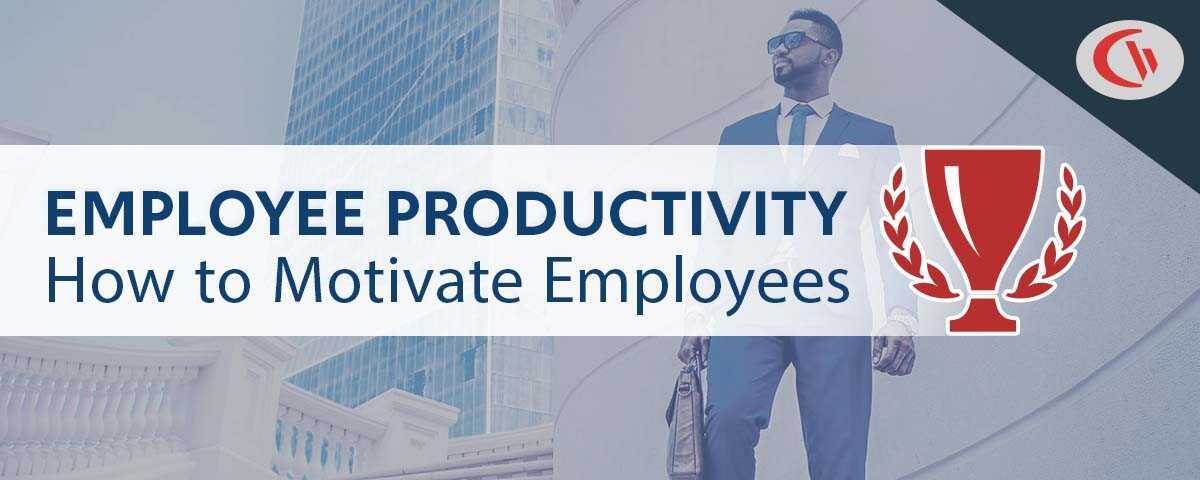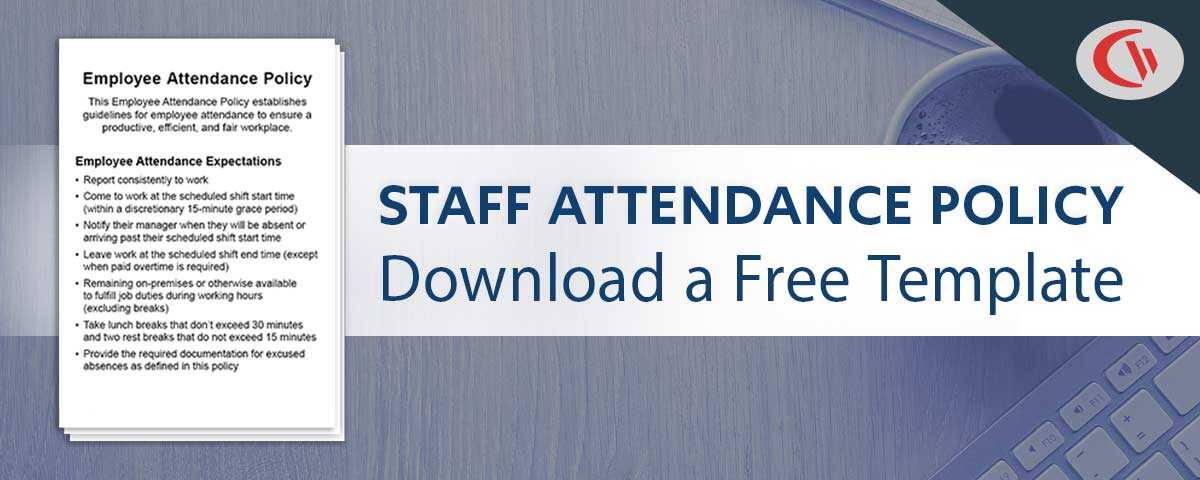How to Motivate Underperforming Employees

Employee motivation, engagement, and productivity are the backbone of business success and sustainability in the 21st century. Reasons for employees’ underperformance may vary from business to business. A manager can adopt different management philosophies, but a long-term plan based on simple strategies works best for improving performance.
A Robert Half International survey suggests that supervisors spend about 17% of their time managing low-performing employees, which is alarming for competitive workplace environments. In Eagle Hill survey findings, 68% of respondents said low performers lowered overall workplace morale.
In this article we will discuss how to motivate employees that have become disengaged; these tips stretch beyond providing healthy snacks in the break room and dive into the ways to motivate that drive employees to excel.
“Productivity is never an accident. It is always the result of a commitment to excellence, intelligent planning and focused effort.”
Paul J. Meyer
Signs of an Unmotivated Employee
Before we cover how to motivate employees, it’s important to understand what an unmotivated employee looks like.
Visible signs of unmotivated employee are:
- Continuous decrease in workplace performance
- Lack of interest in completing professional duties
- Inability to perform complex tasks
- More interest in workplace distractions
- Negativity in performance behavior
- Increase in resistance to change
- Stealing time at work
- Lack of career progression and lost productivity
- Reluctant to become accountable and transparent
Employee motivation and performance are interlinked. Lower motivation levels increase the chances of procrastination, indulgence in workplace distractions, and other counterproductive work behaviors.
A Gallup study presents benefits of highly engaged team members:
- They generate substantially better outcomes
- They treat customers better and attract new ones
- They are more likely to remain in the company than those who are less engaged
Managers need to prioritize motivating employees and transforming disengaged employees into active participants in their organizations. These tips will help managers motivate underperforming employees.
1. Address Employees Job Security Challenge
Employees’ career uncertainty is the direct product of the current challenging economic time. A World Economic Forum survey identifies that more than half of the surveyed employees feel increased anxiety around job security.
While giving employees job stability may not be within your sphere of influence, as a good manager it’s important to understand that an employee’s motivation will naturally suffer if they feel that their career path is in jeopardy.
Unfortunately, if there is a legitimate threat to their career there’s only so much you can do to increase motivation; in the end no amount of positive feedback and employee recognition can quell the lingering feeling that you could be laid off at any moment.
The best you can do to motivate employees during uncertain times is to understand that they are human beings with lives that depend on a sustainable income. Provide them with the support and communication they need wherever possible and help your employees feel valued enough to feel secure in their role.
In the event that the company isn’t planning to restructure, it’s important to provide your employees with as much information as you can. The communication gap between employees and business leaders could lead to misunderstanding that negatively impacts employee retention and motivation.
2. Mentoring Influences Employees’ Motivation
Peer support is a proven motivator, with 9 in 10 workers in a CNBC survey who have a career mentor saying that they are happy in their jobs.
Mentoring directly affects an employees’ learning curve. Many of us are fortunate to find the right mentoring or consultation sessions to overcome challenges.
An Olivet Nazarene University’s survey indicates that 56% of respondents had professional mentors in their career, and most interestingly, 61% suggested that their mentor-mentee relationships developed naturally.
Managers and experienced employees make good mentors as they understand the company goals as well as the strengths and weaknesses of their colleagues. They can also help come up with a mentorship program to provide valuable guidance and support to their mentees.
Most companies rely on some level of mentorship (whether formal or informal) to keep employees moving towards achievable goals. Mentorship provides a significant impact on helping employees develop effective communication and understand how to operate within the company.
3. Transformational Leadership to Inspire Employees
Transformational leadership is a leadership style that emphasizes providing employees with more agency, options to express themselves creatively, open communication, and idealized influence.
Transformational leaders are generally energetic, enthusiastic, and passionate. Not only are these leaders concerned and involved in the process; they are also focused on helping every member of the group succeed as well.
Some common traits of transformational leaders are involvement of team members in the decision-making process, acceptance of new ideas, a strong commitment to active listening, and trust in team members – all of which are ways to motivate employees.
The leadership system works like this: employees participate in organizational activities, company culture improves, and employees feel more motivated to accomplish projected performance. Four components provide specific characteristics on how to be a leader and to adopt the transformational leadership style effectively.
Four Components of Transformational Leadership Style
| Idealized Influence – The manager becomes a role model for employees – Leads by example to set high standards and expectations – Become more transparent to share achievements | Individualized Consideration – Manager accepts employees’ requirements and needs – Recognize individual talent – Foster a supportive work environment |
| Inspirational Motivation – Leader transfers their level of passion and determination to followers – Becomes an optimistic advocate – ability to spread positive energy at the workplace – Give employees the freedom to encourage innovation | Intellectual Stimulation – Challenges existing assumptions – Macro-management strategies to empower employees – Leader risk-taking capabilities enable innovative thinking |
Also, transformational leadership can be seen through making employees feel appreciated and encouraged at work, which can be obtained by regular 1:1 meetings between managers and subordinates. The purpose of one-on-one meetings is to review progress, provide and receive constructive feedback, celebrate successes, resolve obstacles, and provide learning and development coaching.
Managers should consider using premade agenda templates with pre-written questions and suggestions from industry experts to make scheduling and running one-on-one meetings a breeze. A 1 on 1 meeting template is a list of suggested queries designed to help you structure your one-to-one meetings and transform them into a space for employee empowerment and mentoring. These templates increase team culture, engagement, performance, and feedback.
4. Talent Management Initiatives
Retaining top talent is important for achieving company objectives and improving goodwill. Talent management strategies create a perception that companies care about employee motivation and engagement.
Chandler Macleod’s research shows that employees who are continually developed and led by effective managers are twice as likely to want to spend the rest of their career at the same company.
Types of Talent Management Initiatives
Advocate for Fair & Competitive Compensation
A lack of employee recognition will encourage high performers to leave the company and find new opportunities. Management support helps develop a pool of motivated employees, and a sustainable compensation package ensures high employee motivation and retention.
Present Career Development Path
While monetary rewards can be great ways to motivate employees in the short term, in the long term you need to go beyond just money.
Some employees seek out challenges in the form of friendly competition among their peers, while others will be entirely career-oriented. Helping these employees understand what growth opportunities are available to them within the company will increase motivation in the long term.
In-house Learning Ecosystem
For some employees their job satisfaction is directly related to how much they can learn and grow within the company. An underperforming employee may simply be bored in their current role.
While some employees may be content to continue their current job with reasonable compensation, it’s human nature to seek out a challenge. In general employees understand that their role may include some menial tasks, but if they chronically feel that they are underutilized they are more likely to become disengaged.
To help address this factor you can motivate your employees with increased responsibilities that compliment their skills. When they start to see real progress they will feel more valued and motivated to perform.
5. Employees-Centric In-House Programs
Work-related initiatives are good to boost employee motivation. However, an innovative thinker sometimes rejects traditional approaches and adopts new creative ways for keeping employees motivated.
Employees-centric policies should contain activities for self-improvement, team building, and developing a positive mindset.
Examples Of Employee-Centric Programs
Employee Proposed Training Session
The manager should encourage team members to present ideas about research and development opportunities for themselves. A sense of authority over training opportunities can actively motivate employees to develop new skills that they can bring to the company.
Employees can leverage their presentation skills to create, organize, and showcase their proposals, making it easier to communicate innovative ideas.
A Fun Day Activity
While making work fun day-to-day can be a challenge, giving employees the opportunity to partake in paid team building activities is a great way to express gratitude for their contributions.
Activities like the opportunity to play games, a team lunch, and collective efforts for a charitable cause can help encourage innovation and help employees make meaningful connections.
Participation in Corporate Social Responsibility (CSR) Initiatives
Invite employees to become part of the company’s CSR projects – a socially responsible brand is more successful in improving employee motivation. A study published in Schmalenbach Business Review suggests that CSR activities on a supra-organizational level positively impact intrinsic motivation while not affecting extrinsic motivation.
Workers prefer to become part of any initiative that positively impacts society. A PWC survey identified that 23% say doing a job that makes a difference is important to their career.
6. Personalize Employees’ Experience
Prioritizing employee experience is an important part of HR and management strategies. The work environment based on employee needs and preferences is crucial for improving employee motivation in the post-pandemic era.
Studies have found that companies who invest in employee experience are four times more likely to achieve higher profitability than those who don’t.
Ways To Personalize Employee Experiences
Integrate Feedback and Suggestions
Many employers make the mistake of creating company goals without the input of employees. When employees feel like they have a say in the direction of the company they are more likely to become invested in the company.
Create small surveys to gather information about employees’ needs and requirements. The manager should conduct surveys and build trust to collect honest feedback and keep employees motivated.
Promote a Culture of Strong Relationships
Help from a colleague in a time of need is the best thing a workplace environment can offer to a new employee. Managers should promote the principles of trust, collaborations, and open communication.
7. Provide Employees With a Sense of Purpose
Attractive compensation packages, team bonding activities, training programs, and a positive work environment can all improve employee motivation. However, these extrinsic rewards do not necessarily provide the purpose to the employee to complete specific tasks and responsibilities.
A sense of purpose is a significant factor in how motivated employees are; a McKinsey & Company study suggests that individuals who live their purpose at work are more productive than those who don’t.
8. Performance Evaluation Systems: Be Creative, Not Authoritative
Complex systems, processes, and policies increase workload, reduce productivity, and affect an employee’s ability to stay positive. The employee should be eager to become part of performance evaluation, not the opposite.
Navigating through complex systems, processes, and policies can escalate workload, hamper productivity, and dampen an employee’s positivity. Rather than viewing the performance appraisal as a daunting process, it should be embraced as an opportunity for growth and improvement.
Market research from Gallup suggests that only 14% of respondents strongly agree that their performance reviews inspire them to improve their performance.
But that doesn’t mean you should forgo performance evaluations altogether; here’s how you can approach evaluations in a way that provides valuable feedback while minimizing demotivation.
| Do’s | Don’ts |
| 1. A in-house team based on highly skilled and professional employees should perform the performance evaluation | 1. It is better not to outsource the evaluation function to the third-party company |
| 2. Give employees regular feedback to give them regular praise and reduce surprises during performance evaluations. | 2. Do not withhold concerns about employee performance until the review |
| 3. Create measurable performance objectives | 3. Avoid unrealistic qualitative reviews; provide employees with metrics that are relevant and sustainable for their role. |
| 4. Evaluation team should be friendly and collaborative to create a perception of improving employee productivity and engagement | 4. Do not show signs of disrespect and overt power imbalances such as aggressive body language |
| 5. Built trust to come up with innovative ways to motivate employees and keep their performance up to the required level | 5. Feedback is an asset for performance improvement. However, lengthy surveys to collect feedback decrease employee engagement |
Get Your FREE Employee Performance Improvement Plan (PIP) Template
- Set expectations for underperforming employees
- Establish a timeline for improving on actionable goals
- Keep track of check-ins and milestones throughout the PIP
Get started today—Download the FREE template to correct employee productivity and conduct issues.
9. Use Communication to Address Employees Issues
The new hybrid work environment helped remote employees to maximize work life balance. A FlexJobs survey identifies that 58% of respondents want a fully remote job in the post-pandemic era, and 39% prefer the hybrid arrangement. Therefore, new management strategies are important to maximize employee engagement and performance in the remote environment.
Develop an In-house Support Group
A committee based on remote workers and senior-level executives is vital to listen and discuss current issues for remote workers. Committee responsibilities include factors for improving remote employee motivation, reasons for work-related stress, and the effectiveness of the company’s policies in improving employee motivation.
Improve Reporting Process
The manager and support group need to report employees’ issues to higher management quarterly or monthly. The remote environment is a new phenomenon for the majority of business executives. Therefore, continuous reporting ensures information flow and makes the work-related process more effective.
Develop Ideas to Motivate Employees
The manager understands team spirit and current engagement, motivation-level, confidence, expectations, and preferences. It is better to do brainstorming sessions with virtual teams to generate ideas to encourage employees. You will realize that continuous discussion helps employees feel valued and improves employee morale in your company.
10. Data is the Game-Changer: Make Use of Some Analytics
HR analytics is a secret tool for managers to understand which of their employees may be struggling with motivation in the workplace. Unfortunately, not every manager has access to the necessary workforce analytics tools.
A LinkedIn study in 2020 suggests that only 19% of companies have adopted HR analytics, and 12% have dedicated analytics roles.
In the absence of advanced analytics, managers are limited to traditional approaches to identify employees that are struggling. When team members are spending their time on in-office tasks these struggles may be more evident, but as the hybrid work model expands companies need to ensure that visibility does not suffer.
To understand factors responsible for low employee productivity and engagement, you can analyze reports about how employees spend their time during the work day.
Improve Employee Productivity With
CurrentWare’s Remote Employee Monitoring Software
Ready to get advanced insights into how your employees spend their time? Reach out to the CurrentWare team for a demo of BrowseReporter, CurrentWare’s employee and computer monitoring software.
- Improve Productivity
Track unproductive web browsing and idle time to detect time-wasting - Save Time With Intuitive Reports
User-friendly reports make it easy to understand employee computer activity - Enhance Visibility
See how employees spend their time—even on Terminal Server and Remote Desktop Services!
Conclusion
Organizations in the post-pandemic era must continuously invest efforts to identify opportunities to improve employee motivation and boost employee morale.
While professional development, a healthy work life balance, healthy snacks, natural light, and less time spent in office are all great opportunities to improve employee engagement, the ultimate method for motivating employees is simply to work with them to understand their needs and provide them with the support they need to excel in their careers.
Employee feedback makes all the difference in transforming underperformers into a highly motivated workforce to meet the company’s mission and achieve positive outcomes.


